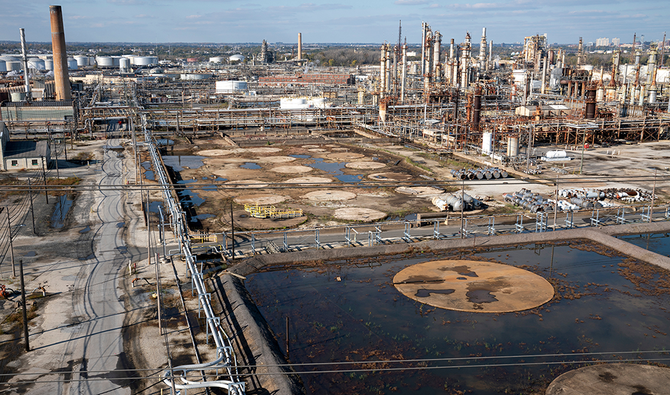
- ARAB NEWS
- 11 Jul 2025

A week ago, global headlines were dominated by Brent crossing the $60 per barrel barrier. A week later West Texas Intermediate (WTI) also tipped over the $60 mark. It represented the longest oil-price rally in two years and the highest price for WTI in 13 months. The index has risen by 16 percent since the beginning of February.
At the end of last year, this column had argued that oil would be an important reflation trade this year. This holds true alongside other commodities. There are many reasons why we should be careful, however, before hailing the next commodities super cycle just yet — despite prices moving in the right direction.
The latest rally was aided by an extreme cold snap in North America, Europe, and Asia. The Arctic blast helped demand soar and it had a negative impact on supplies from the Permian and other US shale patches. At the same time, pipelines and refineries in the state of Texas had to partially shut.
An important reason behind the price rises was the extraordinary compliance with historic production cuts of OPEC+ — an alliance of the 13 OPEC nations with its 10 non-OPEC friends led by Russia.
In December and January, OPEC+ extended the cuts for three further months — allowing an exception for Russia and Kazakhstan in February and March. On top of that, Saudi Arabia announced a one-time voluntary production cut of 1 million barrels per day (bpd) for February and March.
This curbed supplies sufficiently to drain Organization for Economic Cooperation and Development (OECD) inventories to 3,063 million barrels. However, they are still 138 million barrels above their five-year average. OECD inventories are the all-important metric OPEC+ uses to measure and assess the health of global oil markets.
Last week’s monthly oil market report by OPEC revised the demand increase for 2021 down by 100,000 bpd to 5.8 million bpd. Due to a resurgence in coronavirus disease (COVID-19) cases, the International Energy Agency (IEA) also expects demand during the first quarter of this year to be more sluggish than earlier anticipated.
However, most economists expect the third and fourth quarter of this year to show sizable growth. This is reflected by the International Monetary Fund (IMF) raising its growth forecast for this year from 5.2 percent to 5.5 percent.
While the above is positive, it will be important to watch out for developments which could derail the trend in the short run.
Next month’s ministerial meeting of OPEC+ may not be quite that easy. Russian oil minister, Alexander Novak, announced over the weekend that oil markets had rebalanced. That may be so for Russia whose oil industry is comfortable with the current price for Brent. Several other oil-producing nations require a higher oil price to balance their budgets though.
What should not be forgotten either, is that the one-time Saudi production cut was instrumental for the recent price action. The OPEC+ ministerial at the beginning of March will look further into the future — into the month of April and beyond.
At current price levels the more hawkish member countries may find it not that easy to curb the enthusiasm of their dovish counterparts when it comes to tapering the current cuts.
On Monday, Crown Prince Mohammed bin Salman and Russian President Vladimir Putin held a telephone conversation and, among other things, discussed their countries’ cooperation under the OPEC+ agreement.
Oil prices will doubtlessly recover over the next 12 months going into 2022, but maybe not as quickly as some had hoped for. Whether there will be a new commodities super cycle remains to be seen. A lot of it depends on infrastructure programs in the US and Europe and on how the Chinese economy develops over the next 12 months.
This will be counterbalanced by how many new barrels Libya, Iran, and to a lesser extent Venezuela, who are exempt from the production cuts under the OPEC+ regime, will put on the market in the face of changed geopolitical circumstances with a new US administration and prospects of a lasting peace in the North African nations.
The American shale space is another imponderability: Analysts expect US supply to hold steady hovering around 11 million bpd during 2021. That being said, the shale patch has been good for many surprises over the last decade and it remains to be seen what impact a quickly rising oil price has on those nimble producers.
This prompted the US Energy Information Administration (EIA) to warn of the potential of falling oil prices toward the end of the year — obviously depending on where the supply demand balance will move.
All in all, the first one-and-a-half months of this year have been nothing short of stunning for oil prices. Whether the sector can hold onto the gains will to a large degree depend on the discipline with the production regime among OPEC+ member countries. In that sense all eyes are on next month’s ministerial meeting.
• Cornelia Meyer is a Ph.D.-level economist with 30 years of experience in investment banking and industry. She is chairperson and CEO of business consultancy Meyer Resources. Twitter: @MeyerResources